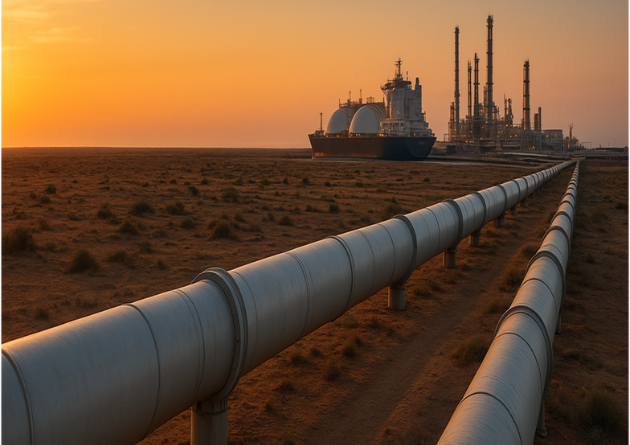Natural Gas Markets Strengthen as EIA Data Shows Modest Inventory Rise.

- rabeelrana
U.S. natural gas futures for October delivery extended Wednesday’s gains on Thursday, reaching a one-week high after government data showed a smaller-than-expected increase in stockpiles. The U.S. Energy Information Administration (EIA) reported that natural gas inventories rose by 18 billion cubic feet (bcf) for the week ending August 22, well below market expectations of a 27 bcf build, and significantly below the five-year average of 38 bcf for the same period.
Weather forecasts provided additional support. Atmospheric G2 projected that early-autumn coolness will spread across the eastern two-thirds of the U.S., while above-normal temperatures are expected to persist across the West Coast between September 2–6. Meanwhile, Vaisala forecasted cooler-than-average conditions from North Carolina to Northern California for September 4–8, a trend that could dampen late-summer demand for air conditioning.
Despite the recent rebound, natural gas prices remain under pressure, having dropped to a 9.5-month low earlier this week due to persistent expectations of cooler weather. Furthermore, rising U.S. natural gas production continues to weigh on sentiment. The EIA recently raised its 2025 output forecast to 106.44 bcf/day, up from July’s estimate of 105.9 bcf/day, with 2026 production also revised higher. On Thursday, dry gas production in the lower 48 states stood at 107.1 bcf/day, up 3.1% year-on-year.
On the demand side, gas usage in the lower 48 was 72.4 bcf/day, down sharply by 15.2% year-on-year, reflecting muted consumption. Liquefied natural gas (LNG) exports, however, provided a stable outlet, with net flows to U.S. export terminals at 15.4 bcf/day, slightly higher on the week.
Electricity consumption trends also offered a supportive signal for gas markets. The Edison Electric Institute reported that U.S. power generation rose 7.7% year-on-year in the week ending August 23, with total output in the past 52 weeks climbing 3.1% compared to the previous year.
Natural gas inventories currently stand 3.5% lower year-on-year, but remain 5% above their five-year seasonal average, indicating that supply levels are still adequate. In Europe, storage facilities were reported at 76% capacity as of August 26, trailing the five-year average of 84% for this time of year.
Meanwhile, drilling activity remains elevated. Baker Hughes reported that the number of active U.S. natural gas rigs was steady at 122 rigs last week, just below the two-year high of 124 rigs earlier this month. This marks a significant recovery from the four-year low of 94 rigs seen in September 2024.
